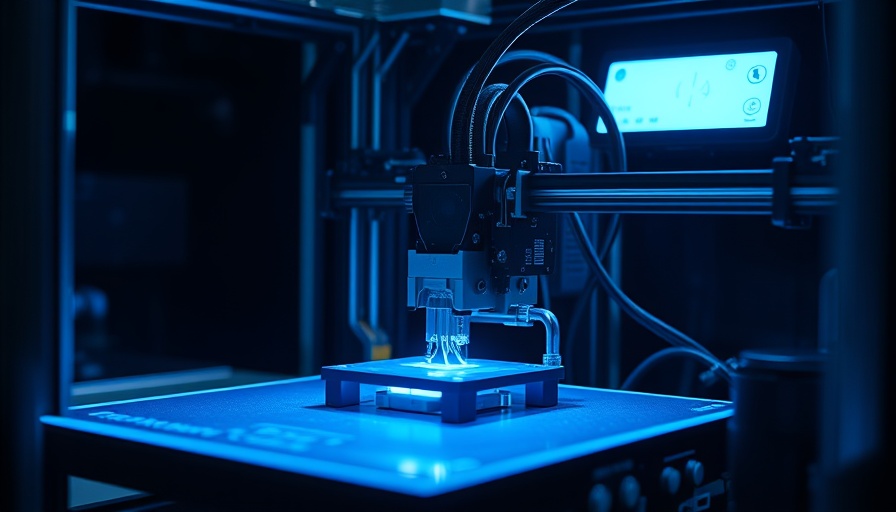
Revolutionizing Tissue Engineering: The Role of 3D Bioprinting
3D bioprinting is rapidly emerging as a transformative technology in the fields of medicine and tissue engineering, enabling researchers to create biologically relevant tissue models. At the forefront of this innovation is Carnegie Mellon University's Feinberg lab, which has developed a groundbreaking microphysiologic system entirely from collagen using their Freeform Reversible Embedding of Suspended Hydrogels (FRESH) technique. This approach not only facilitates the printing of soft living cells but also enhances the resolutions to create vascularized tissue models that closely imitate human physiology.
The Power of Collagen in Bioprinting
Collagen is the most abundant protein in the human body, serving as a vital structural component for various tissues and organs. The Feinberg lab’s ability to utilize collagen in 3D bioprinting marks a significant step forward. Unlike traditional microfluidic systems made from synthetic materials that fall short in replicating biological environments, the new collagen-based structures allow for a more accurate reflection of living tissues. Adam Feinberg, a leading researcher on this project, emphasizes that these biologically realistic models not only help researchers build better therapies, such as those for type 1 diabetes, but also improve the overall functionality of cells within the models.
Technical Breakthroughs and Their Implications
The refinement of the FRESH printing technology has resulted in microfluidic systems that incorporate fluidic channels the size of human blood vessels—down to approximately 100 microns in diameter. Such precision is critical for developing vascularized tissues, as it allows nutrient and waste exchange similar to that in functional organs. As detailed by Daniel Shiwarski, an assistant professor involved in the project, these technical advancements enable the creation of more complex tissues that hold transformative potential for therapeutic applications.
Potential Applications in Medical Practice
The implications of this research extend beyond laboratory settings. Concierge health practitioners, who prioritize personalized patient care, can leverage these advancements in 3D bioprinting. For instance, the engineered pancreatic-like tissue developed could one day lead to groundbreaking treatment options for patients suffering from type 1 diabetes. As practitioners stay informed about the latest findings, they can integrate new strategies directly into their practice, providing cutting-edge care that may significantly improve patient outcomes.
How 3D Bioprinting Aligns with Current Healthcare Trends
As the healthcare landscape continues to evolve, the integration of technological advancements like 3D bioprinting into medical practices is becoming increasingly vital. Personalized medicine is at the forefront of healthcare innovations, pushing for treatments that cater specifically to individual patient needs. 3D bioprinting opens up avenues for developing bespoke therapies that mimic the unique physiological characteristics of a patient, enhancing the overall effectiveness of treatments.
Why Staying Informed is Crucial for Health Practitioners
Staying updated on the latest technological advancements, especially those as impactful as 3D bioprinting, is crucial for health practitioners. As these technologies draw closer to application in clinical settings, understanding their mechanics and potential uses can empower practitioners to provide better care. By engaging with emerging research like the collagen-based microphysiologic systems, physicians can anticipate patient needs and stay ahead in the dynamic field of medicine.
Conclusion: Embrace the Future of Medicine
As advancements in 3D bioprinting build momentum, health practitioners must remain vigilant and informed about how such technologies can directly enhance their practices. The ability to create biologically-relevant tissues will not only shape future treatments but also challenge the way healthcare is delivered. By keeping abreast of these changes, concierge health practitioners can foster an environment where cutting-edge solutions become part of everyday patient care, ultimately resulting in better health outcomes and patient satisfaction.
 Add Row
Add Row  Add
Add 






Write A Comment